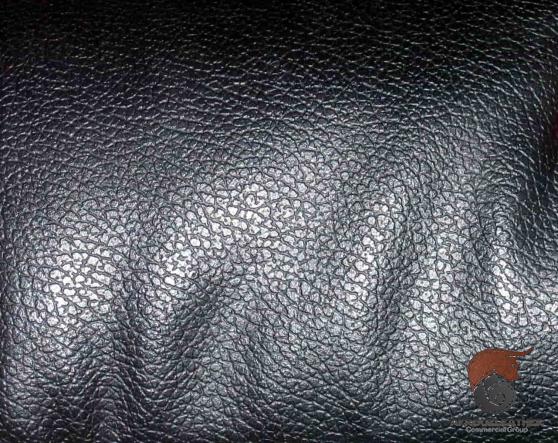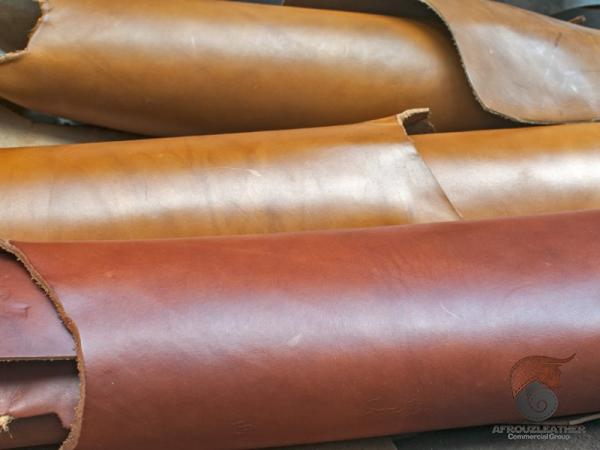The global leather industry is a significant contributor to the economy, with leather products being highly sought after for their durability, versatility, and luxurious appeal. However, the industry has also faced criticism for its environmental impact and ethical concerns. As a result, various alternatives to traditional leather have emerged in recent years, including synthetic materials and sheep crust. This article aims to provide a comparative analysis of sheep crust as a raw material and real leather, exploring their properties, benefits, drawbacks, and impact on the environment. Sheep Crust Raw Material: Sheep crust is a type of leather that is derived from the skin of sheep. It is commonly used in the production of various leather goods, including shoes, handbags, and furniture. Sheep crust is known for its softness, lightweight characteristics, and durability. The material undergoes a tanning process that involves treatment with chemicals to preserve the leather and prevent it from decomposing. Advantages of Sheep Crust Raw Material: 1. Cost-Effective: Sheep crust is typically less expensive compared to real leather, making it an attractive alternative for those seeking leather-like products at a more affordable price point.
leather
 2. Lightweight and Soft: Sheep crust offers a lightweight feel, making it suitable for applications where the weight of the product is a concern. Additionally, its softness adds to the comfort factor, making it desirable for items such as footwear and garments. 3. Durability: The tanning process used for sheep crust ensures that the material is resilient and long-lasting. This durability makes it a popular choice for items that require frequent use or heavy handling. Drawbacks of Sheep Crust Raw Material: 1. Limited Aesthetics: Sheep crust often lacks the natural grain pattern and texture that is characteristic of real leather. This can result in a less luxurious appearance, which may be a drawback for consumers looking for products with high-end aesthetics. 2. Environmental Impact: Similar to real leather, the tanning process used for sheep crust involves the use of chemicals and can contribute to water pollution and waste generation. The environmental impact of sheep crust largely depends on the specific techniques and practices employed by manufacturers. Real Leather: Real leather, also known as genuine leather, is derived from the hide of animals such as cows, goats, and sheep. It is widely used in the production of luxury goods, including shoes, bags, and upholstery. Real leather is valued for its natural beauty, durability, and unique characteristics. Advantages of Real Leather: 1. Luxurious Appearance: Real leather is highly sought after for its luxurious look and feel.
2. Lightweight and Soft: Sheep crust offers a lightweight feel, making it suitable for applications where the weight of the product is a concern. Additionally, its softness adds to the comfort factor, making it desirable for items such as footwear and garments. 3. Durability: The tanning process used for sheep crust ensures that the material is resilient and long-lasting. This durability makes it a popular choice for items that require frequent use or heavy handling. Drawbacks of Sheep Crust Raw Material: 1. Limited Aesthetics: Sheep crust often lacks the natural grain pattern and texture that is characteristic of real leather. This can result in a less luxurious appearance, which may be a drawback for consumers looking for products with high-end aesthetics. 2. Environmental Impact: Similar to real leather, the tanning process used for sheep crust involves the use of chemicals and can contribute to water pollution and waste generation. The environmental impact of sheep crust largely depends on the specific techniques and practices employed by manufacturers. Real Leather: Real leather, also known as genuine leather, is derived from the hide of animals such as cows, goats, and sheep. It is widely used in the production of luxury goods, including shoes, bags, and upholstery. Real leather is valued for its natural beauty, durability, and unique characteristics. Advantages of Real Leather: 1. Luxurious Appearance: Real leather is highly sought after for its luxurious look and feel.
Specifications of leather
 The natural grain pattern and texture give it a unique aesthetic appeal that is difficult to replicate with synthetic materials. 2. Longevity: Real leather is renowned for its durability, often lasting for many years with proper care. This longevity makes it a cost-effective choice in the long run as compared to synthetic alternatives that may need frequent replacement. 3. Breathability: Unlike synthetic materials, real leather offers breathability, allowing air to pass through. This feature makes it comfortable to wear in various weather conditions, particularly in footwear and clothing applications. Drawbacks of Real Leather: 1. Cost: Real leather is generally more expensive compared to synthetic alternatives and sheep crust. The price can be a deterrent for budget-conscious consumers. 2. Environmental Impact: Leather production has been criticized for its significant environmental impact. The tanning process requires the use of chemicals such as chromium salts, which can contaminate water sources if not managed properly. Additionally, the livestock industry associated with leather production contributes to deforestation and greenhouse gas emissions.
The natural grain pattern and texture give it a unique aesthetic appeal that is difficult to replicate with synthetic materials. 2. Longevity: Real leather is renowned for its durability, often lasting for many years with proper care. This longevity makes it a cost-effective choice in the long run as compared to synthetic alternatives that may need frequent replacement. 3. Breathability: Unlike synthetic materials, real leather offers breathability, allowing air to pass through. This feature makes it comfortable to wear in various weather conditions, particularly in footwear and clothing applications. Drawbacks of Real Leather: 1. Cost: Real leather is generally more expensive compared to synthetic alternatives and sheep crust. The price can be a deterrent for budget-conscious consumers. 2. Environmental Impact: Leather production has been criticized for its significant environmental impact. The tanning process requires the use of chemicals such as chromium salts, which can contaminate water sources if not managed properly. Additionally, the livestock industry associated with leather production contributes to deforestation and greenhouse gas emissions.
buy leather
 3. Ethical Concerns: Animal welfare is a significant ethical concern associated with real leather. The use of animal hides in leather production raises questions about the treatment, conditions, and practices employed in animal farming. Conclusion: In conclusion, both sheep crust raw material and real leather offer their own set of advantages and drawbacks. Sheep crust provides an affordable, lightweight, and durable alternative to real leather, making it suitable for various applications. However, it may lack the high-end aesthetics of real leather and can still contribute to environmental issues if not responsibly manufactured. Real leather, on the other hand, offers a luxurious appearance, durability, and breathability, but comes with a higher cost and ethical and environmental concerns. Ultimately, the choice between sheep crust raw material and real leather will depend on individual preferences, budget constraints, and consideration of ecological and ethical factors.
3. Ethical Concerns: Animal welfare is a significant ethical concern associated with real leather. The use of animal hides in leather production raises questions about the treatment, conditions, and practices employed in animal farming. Conclusion: In conclusion, both sheep crust raw material and real leather offer their own set of advantages and drawbacks. Sheep crust provides an affordable, lightweight, and durable alternative to real leather, making it suitable for various applications. However, it may lack the high-end aesthetics of real leather and can still contribute to environmental issues if not responsibly manufactured. Real leather, on the other hand, offers a luxurious appearance, durability, and breathability, but comes with a higher cost and ethical and environmental concerns. Ultimately, the choice between sheep crust raw material and real leather will depend on individual preferences, budget constraints, and consideration of ecological and ethical factors.

Your comment submitted.